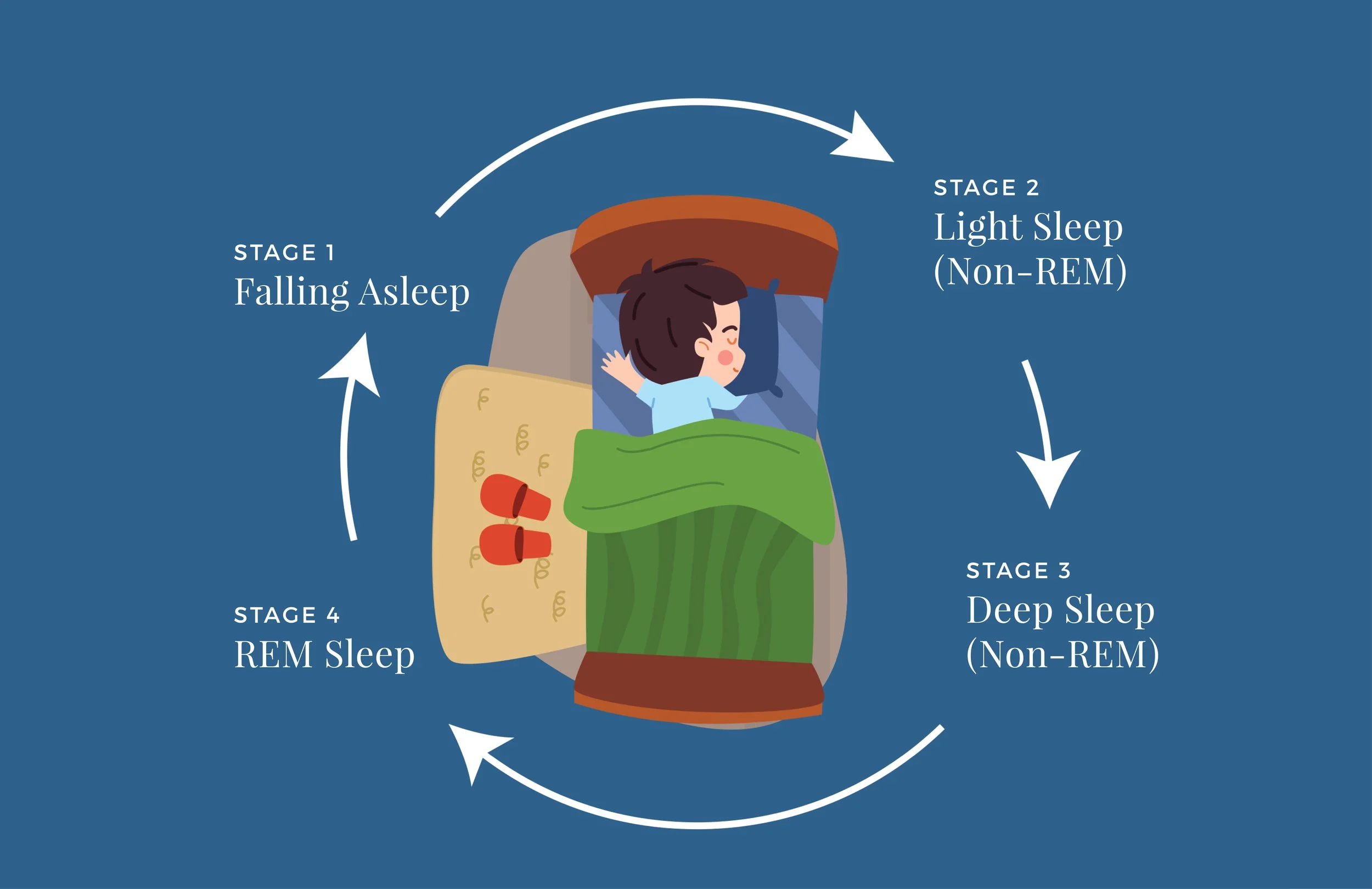Understanding Sleep Cycles: Why They Matter for Autistic Learners
Hello, BCBAs and sleep advocates! Today, we’re diving into the science of sleep cycles and why they’re so important for our autistic learners. Sleep isn’t just about closing your eyes and waking up refreshed. It’s a dynamic process that involves several distinct stages, each crucial for cognitive function, emotional regulation, and overall well-being. For autistic learners, disruptions in these sleep cycles can significantly affect their behavior, learning, and daily functioning. Let’s explore why understanding sleep cycles matters and how we, as BCBAs, can help regulate them for better outcomes.
The Stages of Sleep: A Quick Breakdown
Before we get into how sleep cycles impact our community, let’s review the different stages of sleep:
Stage 1 (Falling Asleep): This is the transition phase between wakefulness and sleep. It’s a light sleep where the brain begins to slow down, and the body relaxes.
Stage 2 (Light Non-REM Sleep): In this stage, heart rate and breathing slow down even further, and body temperature drops. Brain activity slows, but there are brief bursts of electrical activity.
Stage 3 (Deep Non-REM Sleep): Also called slow-wave or delta sleep, this is the stage where the body repairs and regenerates tissues, builds muscle, and strengthens the immune system. It’s the most restorative part of sleep.
REM Sleep (Rapid Eye Movement): REM sleep is when most dreaming occurs, and it’s critical for memory consolidation and emotional regulation. The brain is highly active during this phase, but the body remains relaxed.
Throughout the night, we cycle through these stages multiple times, with REM periods becoming longer as the night progresses. A full cycle takes about 90 minutes, and ideally, we go through four to six of these cycles each night.
The Impact of Disrupted Sleep Cycles on Our Autistic Community
For autistic learners, disruptions to these sleep cycles can have a significant impact on their behavior and ability to learn. When they don’t experience enough deep or REM sleep, they miss out on critical opportunities for brain development, memory consolidation, and emotional regulation.
Deep Sleep Deficits: Lack of deep sleep can lead to difficulties with focus and attention, which in turn can affect a learner’s ability to engage in ABA sessions or school activities. Deep sleep is also essential for the body’s physical restoration, so missing out on this stage can contribute to daytime fatigue or irritability.
REM Sleep Disruptions: Without enough REM sleep, our community will struggle with processing emotions or retaining new information. Since REM is key to cognitive and emotional health, disruptions can lead to more frequent behavioral challenges and difficulty adapting to new routines or environments.
These disruptions can create a cycle where poor sleep leads to behavioral issues, which then makes it harder to establish a consistent sleep routine, further compounding the problem.
Practical Tips for BCBAs to Help Regulate Sleep Cycles
So, how can we, as BCBAs, step in to support healthy sleep cycles for those we serve? Here are some practical, evidence-based strategies to consider:
Establish Consistent Sleep Routines:
Consistency is key when it comes to regulating sleep cycles. Work with caregivers to establish a calming bedtime routine that takes place at the same time every night. Activities like reading a book or listening to calming music can signal to the body that it’s time to transition into sleep. Avoiding stimulating activities (like running and jumping) and ensuring there’s enough wind-down time will help learners move smoothly through their sleep cycles.
Use Sleep Diaries:
Encourage caregivers to keep a sleep diary for at least two weeks to track sleep patterns, wake-up times, and any nighttime disturbances. This information can help identify patterns or environmental factors that might be disrupting sleep cycles. Once you have this data, you can make informed adjustments to improve sleep quality.
Minimize Sleep Disruptions:
Make the sleep environment as conducive to rest as possible. Dim lighting, comfortable bedding, and noise-reduction strategies that don’t change at all overnight can all help learners maintain their sleep cycles through the night and maintain their natural sleep cycles. Consider recommending white noise machines or blackout curtains if the learner is sensitive to environmental stimuli that might wake them during light sleep stages.
Introduce Sleep Cues:
Visual schedules or sleep charts can provide structure and predictability, which are essential for our autistic community. Introducing a visual representation of the bedtime routine helps learners understand what to expect, reducing resistance to bedtime. Over time, this consistency supports the development of a healthy, uninterrupted sleep cycle.
Gradually Adjust Bedtimes:
If a learner has developed a habit of late-night sleep, don’t shift bedtime drastically. Instead, move morning wake up and bedtime earlier by 15-minute increments every few days until the desired sleep schedule is achieved. This gradual approach helps the body adapt more naturally to a new sleep-wake cycle.
Deepen Your Understanding with The Sleep Collective Certification
Understanding sleep cycles is just one piece of the larger puzzle when it comes to supporting healthy sleep in autistic learners. To truly make a difference, it’s essential to have a comprehensive understanding of sleep interventions that address the root causes of sleep disturbances. That’s where The Sleep Collective certification comes in.
If you’re ready to deepen your knowledge and develop evidence-based strategies that go beyond the basics, I invite you to join The Sleep Collective certification program. With a focus on personalized sleep plans and behavioral interventions, this certification equips you with the tools to transform the sleep—and the lives—of the learners you support.
Let’s work together to ensure that our learners get the quality sleep they need to thrive, both in their learning environments and beyond.


